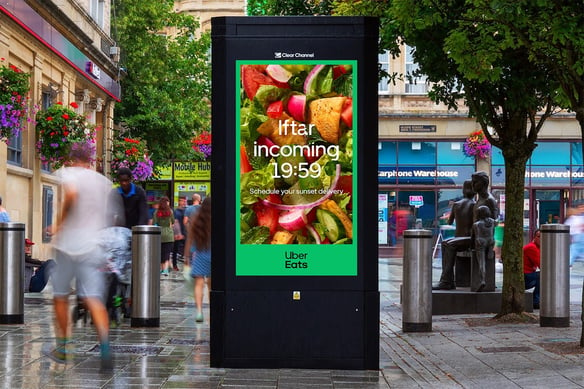
Branding Strategy Examples That Will Define Success in 2025

No surprise that branding – both as a strategy and how it’s executed – is never static. Sometimes the shifts are subtle, like the ongoing ripple effects of generative AI (did a person write that ad you’re ingesting?). Other times, specific marketing moments move the needle more dramatically (think, the Barbie movie’s claim on pink).
The point is, branding is constantly pushing all of us to rethink how we connect with our audiences and one another. Recent viral sensations have one thing in common: the standouts aren’t just clever, they’re meaningful. Authenticity is in, fleeting attention is out.
2025 is all about inviting loyalty through authenticity and creative consistency. Whether you’re looking to disrupt or simply stay ahead of the curve, these are the strategies to put on your radar for the upcoming year.
Why Is Brand Strategy So Important?
Great branding has always been about connecting the dots between your mission, your message and the people you serve.
Household names like Apple, Coca-Cola, Starbucks and others often dominate the spotlight with their marketing efforts, but it’s not just the giants shaping the branding landscape anymore. Brand strategy is a cornerstone for companies of all sizes.
- It’s a blueprint for your brand’s identity, helping customers recognize and connect with you.
- It builds trust and credibility, ensuring a consistent experience for customers and serving as a compass in your quest for authenticity.
- It guides all other marketing efforts, from creating content to designing campaigns.
- It helps you retain customers, fostering a sense of loyalty and alignment with your brand.
With that in mind, let’s explore some branding strategy examples that are more than just marketing wins – they’re masterclasses in connection.
Embrace Authenticity Above All Else

Oat drink company Oatly isn’t afraid to show it all with their marketing.
Who else launches a newsletter named “Spam the Newsletter,” or addresses all readers as “FIRSTNAME LASTNAME” (if you know, you know), or has a whole website dedicated to mistakes they’ve made?
Oatly is gaining a reputation for authentic, slightly wacky marketing that’s driving brand awareness like never before. They sell a milk alternative, but people flock to them for so much more.
Authenticity-Driven Marketing
The use of generative AI exploded since tools like ChatGPT came on the scene. Seemingly overnight, it changed how people do a lot of things, from creating shopping lists to writing emails. The now virtually endless amount of AI-generated content at marketers’ fingertips didn’t go unnoticed by consumers.
The desire for authenticity – the antithesis to AI – has skyrocketed in response. Brandwatch highlighted authenticity-driven marketing as one of the top trends of the past year and one that continues to dominate. Authenticity is something 86% of consumers consider before making a purchasing decision. And while the majority of brands think they are delivering authentic content, there’s a bit of disconnect: only 37% of consumers agree that content is.
That disconnect is disconcerting. Even the dictionaries agree: Oxford University Press's word of the year for 2024 was “brain rot.” If you're not familiar – it refers to the fallout of consuming too much low-quality content online. Audiences everywhere are craving substance over spam.
For marketers, this presents both a challenge and an opportunity. The days of throwing lots and lots of content at the wall to see what sticks are behind us. Instead, the year ahead is all about building meaningful experiences that resonate long after the click.
Listen and Respond With Heart
Stanley tumblers were already having a moment before they shot to even higher viral fame in a dazzling example of brand responsiveness.
A TikTok user posted a clip showing the aftermath of a car fire. Although the vehicle is completely burned out, the car owner’s insulated tumbler sits in the cupholder seemingly untouched – ice cubes still frozen.
@danimarielettering Thirsty after you catch on fire? @Stanley 1913 is like no problem i gotchu #fyp #carfire #accident #stanleycup
♬ original sound - Danielle
Views on the video skyrocketed, with numerous people commenting on what great marketing this was for Stanley and that the women deserved some free merch. Stanley did one better. The president of the company responded with a video addressed directly to the car owner, expressing relief that everyone was safe and highlighting how the incident illustrates Stanley’s Built For Life™ brand promise in action. Then, he offered to replace her mug – and her car.
@stanleybrand #stitch with @Danielle Stanley has your back ❤️
♬ original sound - Stanley 1913
The two videos racked up millions of views and more than 100,000 comments, almost entirely positive. Truly an astounding success in marketing terms.
(Meanwhile, Kia, already grappling with the fallout of recalling 1.5 million vehicles over fire risks, found itself on the wrong end of the narrative. Timing, as always, is everything.)
Community Connections Build Loyalty
There are a few reasons why this example of branding strategy was so effective. Stanley’s marketing team kept their finger on the pulse with social listening and was quick to pivot when an opportunity arose.
The response was authentic, filled with goodwill and had a personal touch. And it got right to the heart of their mission and brand values – making products that are built for life while doing good for their community.
Their target audience embraced the response wholeheartedly. It wasn’t just a clever marketing move. It was a moment of real connection, showing how a brand can turn a viral incident into a meaningful win.
Be Part of the Larger Conversation

McDonald’s UK, in partnership with Ready 10 and Leo Burnett UK, made waves by removing the iconic smile from its Happy Meal boxes during Mental Health Awareness Week. The goal? To show kids it’s okay not to be happy all the time and spark meaningful conversations about emotions within families.
The redesigned boxes featured stickers with various emotions, encouraging children to express the range of their feelings. Plus, a QR code led families to resources developed with BBC Children in Need to open discussions about mental well-being.
Connecting With Purpose
By stepping into a larger societal conversation, McDonald’s turned its packaging into a platform for connection – and it worked. The campaign resonated deeply with parents and children alike, striking the perfect balance between emotional relevance and creative execution.
The idea was rooted in a poignant insight: research commissioned by McDonald’s revealed that nearly half of UK children feel pressured to appear happy, even when they’re not. But the campaign didn’t just talk about the problem, it sparked deeper connections in the homes of consumers and provided tools for action.
It’s not easy to genuinely align your brand with a meaningful cause and join a larger conversation with authenticity but, when done well, it can leave an incredibly powerful lasting impression.
Be In Sync With Your Audience
This year during Ramadan, Uber Eats, in partnership with agency Mother London, launched a marketing campaign in sync with their Muslim customers. Each day at sundown during Ramadan, Muslims break their day-long fast with a nightly feast, iftar.
Uber Eats released a series of digital billboards showcasing popular iftar dishes with a countdown to sunset – with an invitation to schedule a meal at just the right time. Each day, the countdown was customized for each specific location’s time of sunset.
Genius, with a dash of cultural awareness, coming from a food delivery company.
From Understanding to Engaging Your Customers
Understanding your audience isn’t something new, but it’s important enough to warrant revisiting. It’s not just an enduring strategy – it’s the basis for all other marketing tactics and initiatives.
What has changed in recent years are methods and what you can do with the information available to you. Advanced analytics, artificial intelligence and strategic interviews with customers now offer unprecedented insights into consumer behaviors preferences and trends.
All this extra information means new frontiers for personalizing experiences and tailoring content. Consumers crave personalized experiences over generic marketing messages – not just a prompt to order food from Uber Eats, for instance, but a customized countdown to when someone can order.
On top of that, understanding where your target audience is situated is critical – and that requires an omnichannel approach to marketing. While Uber Eats’ digital billboards caught all the attention, it was just one piece of the puzzle in creating a great user experience.
From social media to over-the-top (OTT) TV to paid search ads, you need to be able to map and optimize your customers’ journey across various touch points and meet them where they are.
Execute Great Brand Strategy in 2025 and Beyond
At Kuno, we care about your company, your people and your success. With more than 25 years experience creating and executing winning brand strategies for leading companies across industries, we know what it takes and deliver leading strategies, compelling content and creative, innovative demand generation and reporting to underscore performance and inform future efforts.
Schedule a consultation today to see what we can do for your brand in 2025 and beyond.






